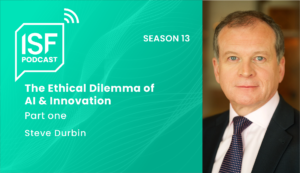How the Responsible Use of AI Can Create Safer Online Spaces
Artificial intelligence (AI) has become an everyday reality and business tool spurred by computer advancement, data science and the availability of huge data sets. Big tech companies – Google, Amazon and Meta – are now developing AI-based systems. The technology can mimic human speech, detect cancer, predict criminal activity, draft legal contracts, solve accessibility problems, and accomplish tasks better than humans. For businesses, AI promises to predict business outcomes, improve processes and deliver efficiencies at substantial cost savings.
But there are growing concerns with AI, still.
AI algorithms have become so powerful – with some experts labelling AI as being sentient – that any corruption, tampering, bias or discrimination can have massive implications on organisations, human life and society.
AI algorithms and digital discrimination
AI decisions increasingly influence and impact people’s lives at scale. Using them irresponsibly can exacerbate existing human biases and discriminatory measures such as racial profiling, behavioural prediction or sexual orientation identification. This inbuilt prejudice occurs because AI is only as good as the amount of training data we can provide, which can be susceptible to human biases.
Biases can also occur when machine learning algorithms are trained and tested on data that under-represent certain subpopulations, such as women, people of colour or people in certain age demographics. For example, studies show that people of colour are particularly vulnerable to algorithmic bias in facial recognition technology.
Biases can also occur in usage. For example, AI algorithms designed for a particular application may be used for unintended purposes for which they were not built, which results in misinterpretation of outputs.
Validating AI algorithm performance
AI-led discrimination can be abstract, un-intuitive, subtle, intangible and difficult to detect. The source code may likely be restricted from the public or auditors may not know how an algorithm is deployed. The complexity of getting inside an AI algorithm to see how it’s been written and responding cannot be underestimated.
Current privacy laws rely on notice and choice; therefore, the resultant barrage of notifications asking consumers to agree to lengthy privacy policies is seldom read. If such notices were applied to AI, it would have serious consequences for the security and privacy of consumers and society.
AI as a weapon
While true AI-powered malware may not yet exist, it’s not far-fetched to assume that artificially intelligent malware will amplify attacker capabilities. The possibilities are endless – malware that learns from its environment to identify and exploit new vulnerabilities, tools that test against AI-based security or malware that can poison AI with wrong information.
Digital content manipulated by AI is already being used to create hyper-realistic, synthetic copies of individuals in real-time (also known as deep fakes). As a result, attackers will leverage deep fakes to create highly targeted social engineering attacks, cause financial damage, manipulate public opinion or gain a competitive advantage.
AI-led discrimination can be abstract, un-intuitive, subtle, intangible and difficult to detect. The source code may likely be restricted from the public or auditors may not know how an AI algorithm is deployed.



